It is 21 September. At 5 pm the Rector’s Office bell rings, we hear it from a distance. Outside, a thin, persistent rain wets last latecomers. Inside the Trifoglio building, the Pesenti room is already packed with people. They talk, laugh, and are all very young. And despite the long day of classes, they are waiting.
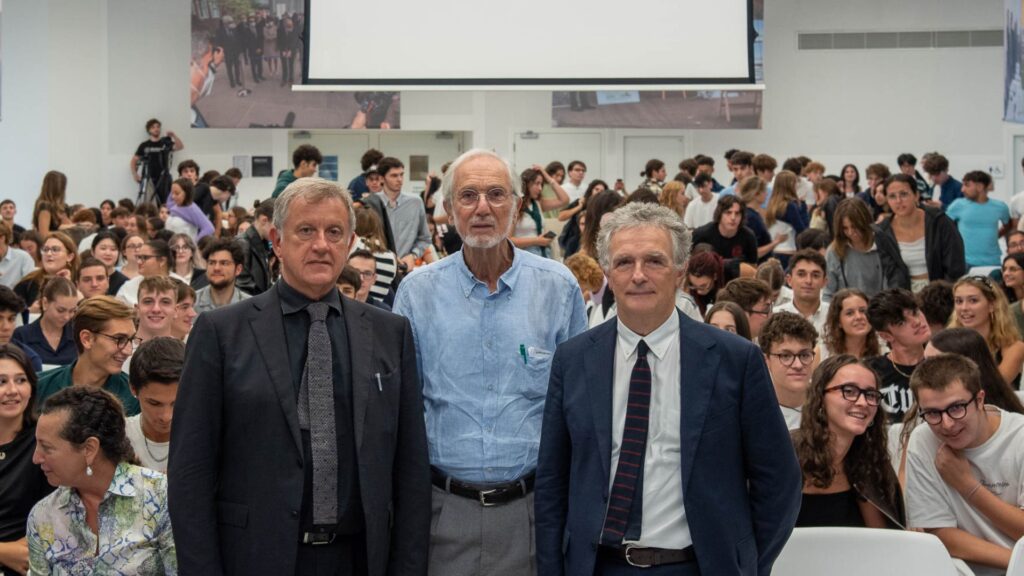
He has arrived. Andrea Campioli, Dean of the School of Architecture, Urban Planning, Construction Engineering, and Emilio Faroldi, Executive Vice-Rector, are already on the stage to welcome him. A few words are enough, because actually, he needs no introduction.
Because he is Renzo Piano.
With his characteristic foresight, he decided not to deliver a generic lecture to all students but to address new students specifically. Because he had been a freshmen, too. And he decided to show new students the arrival point of their journey.
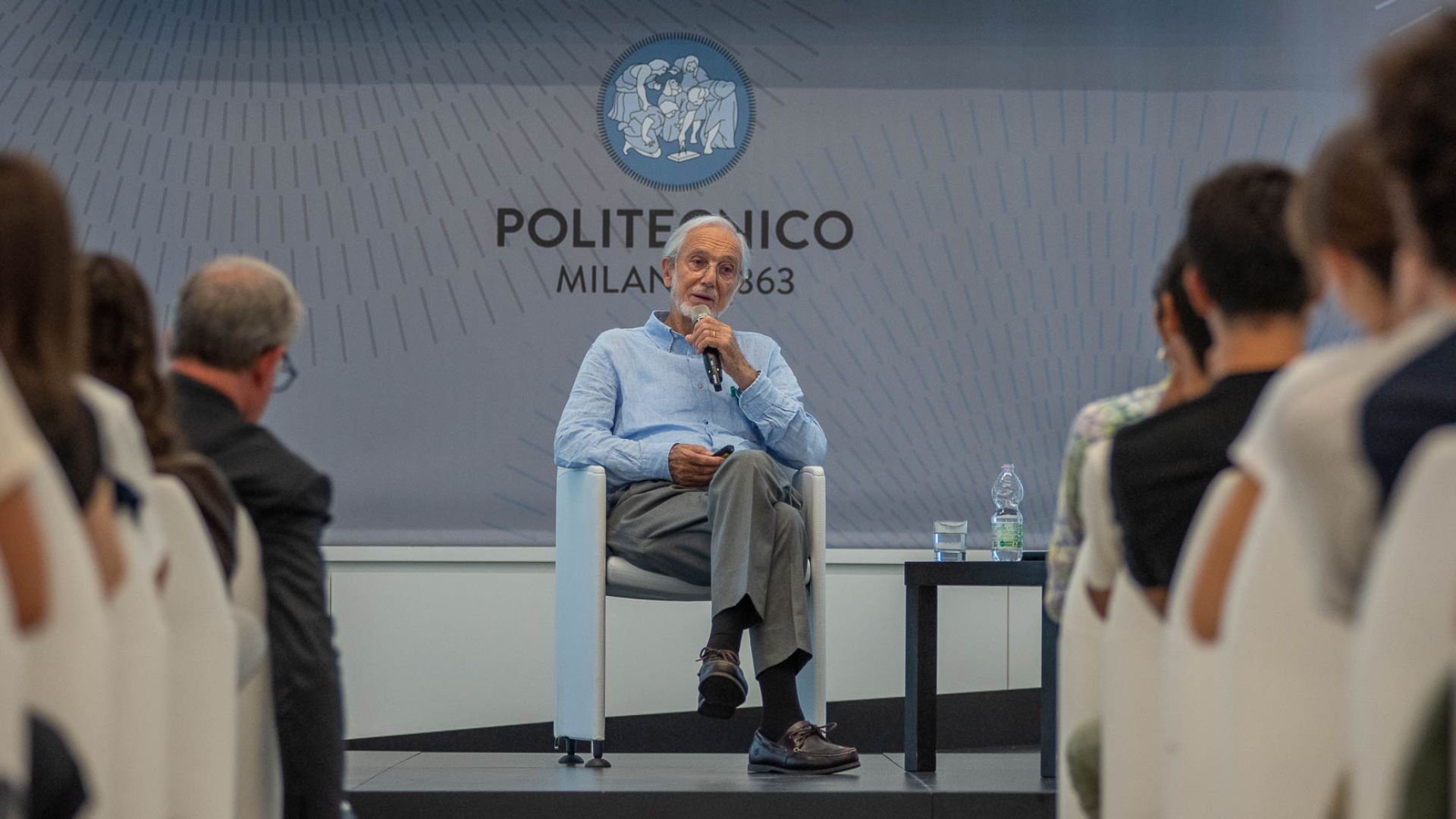
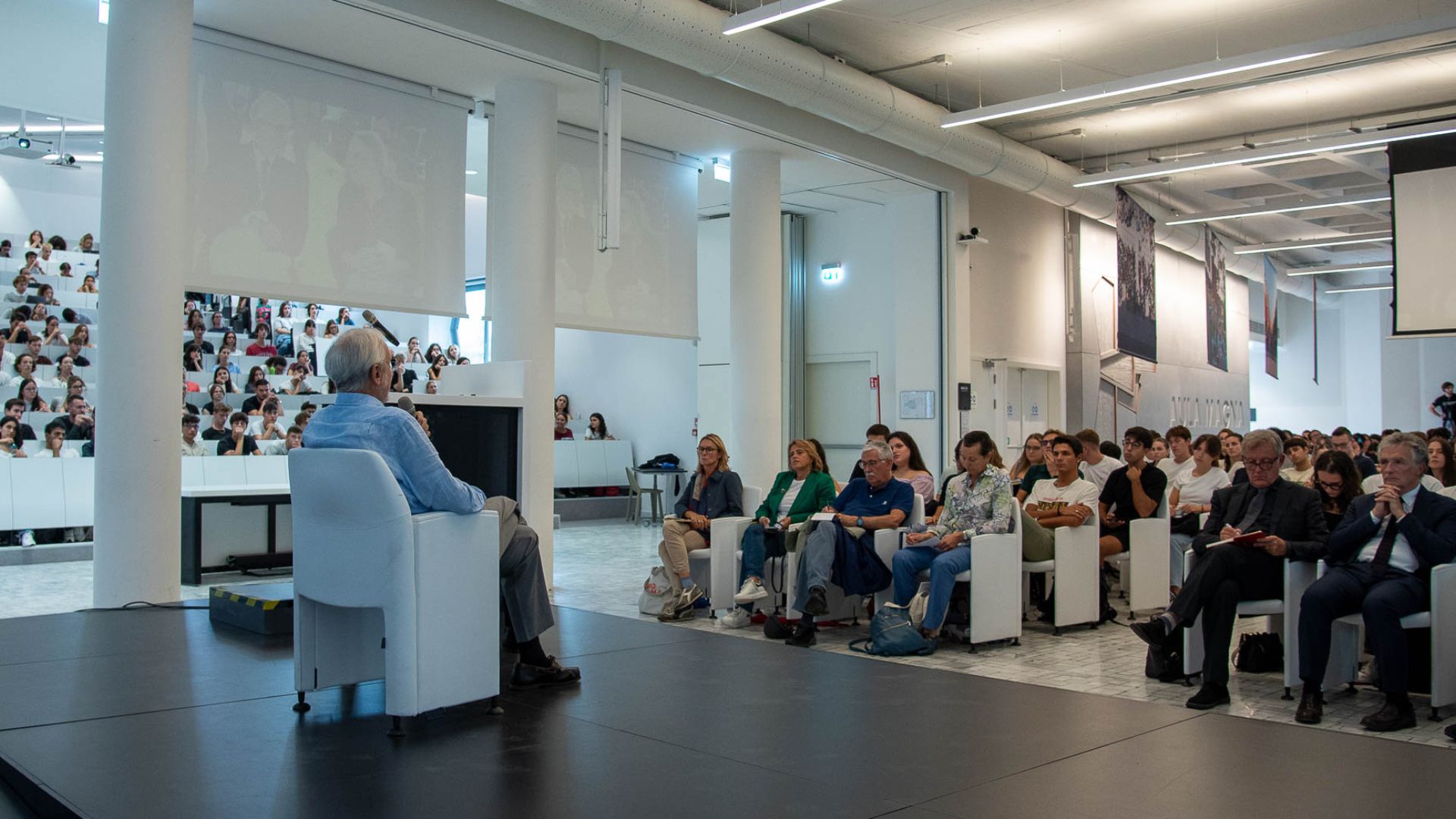
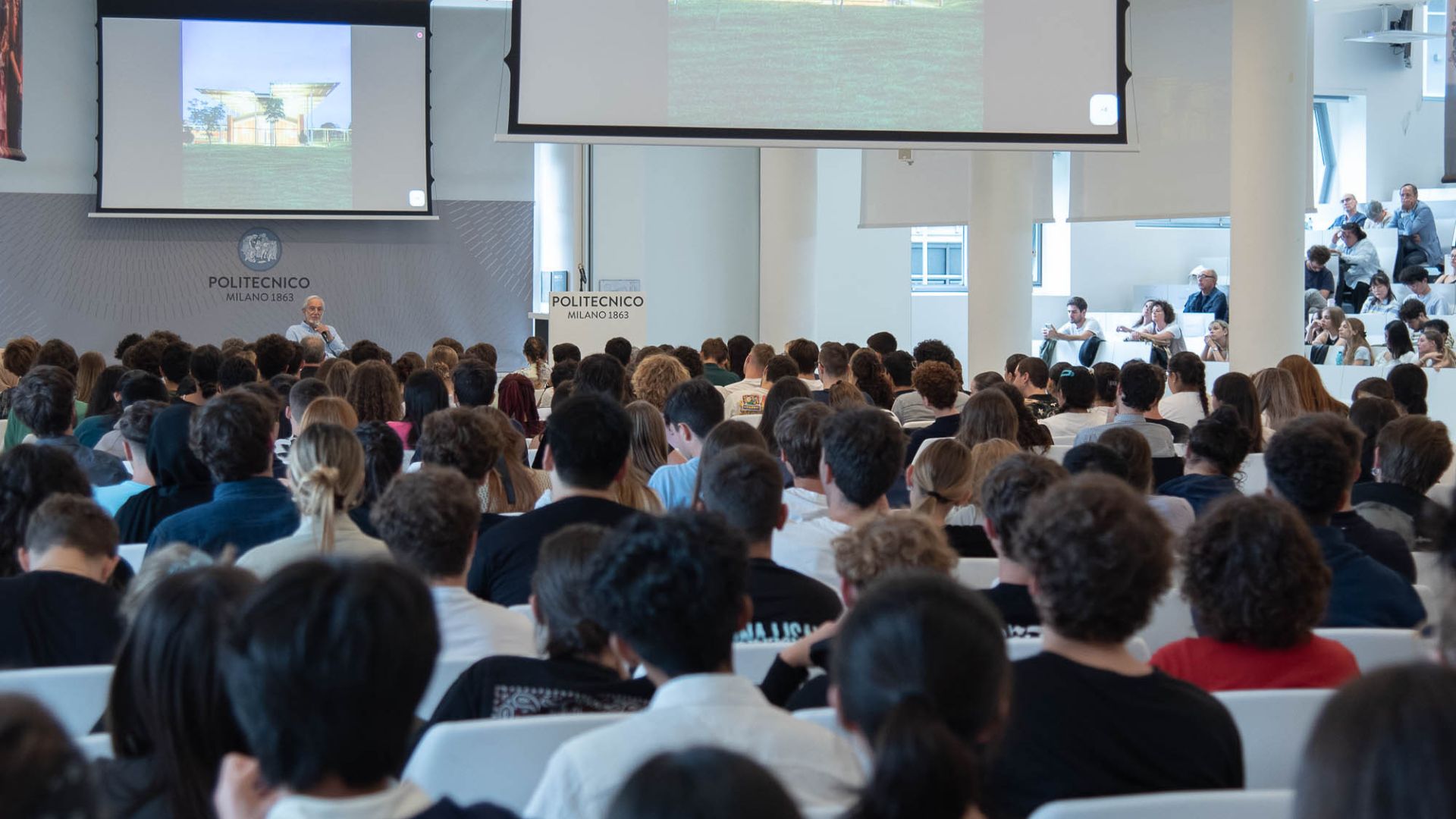
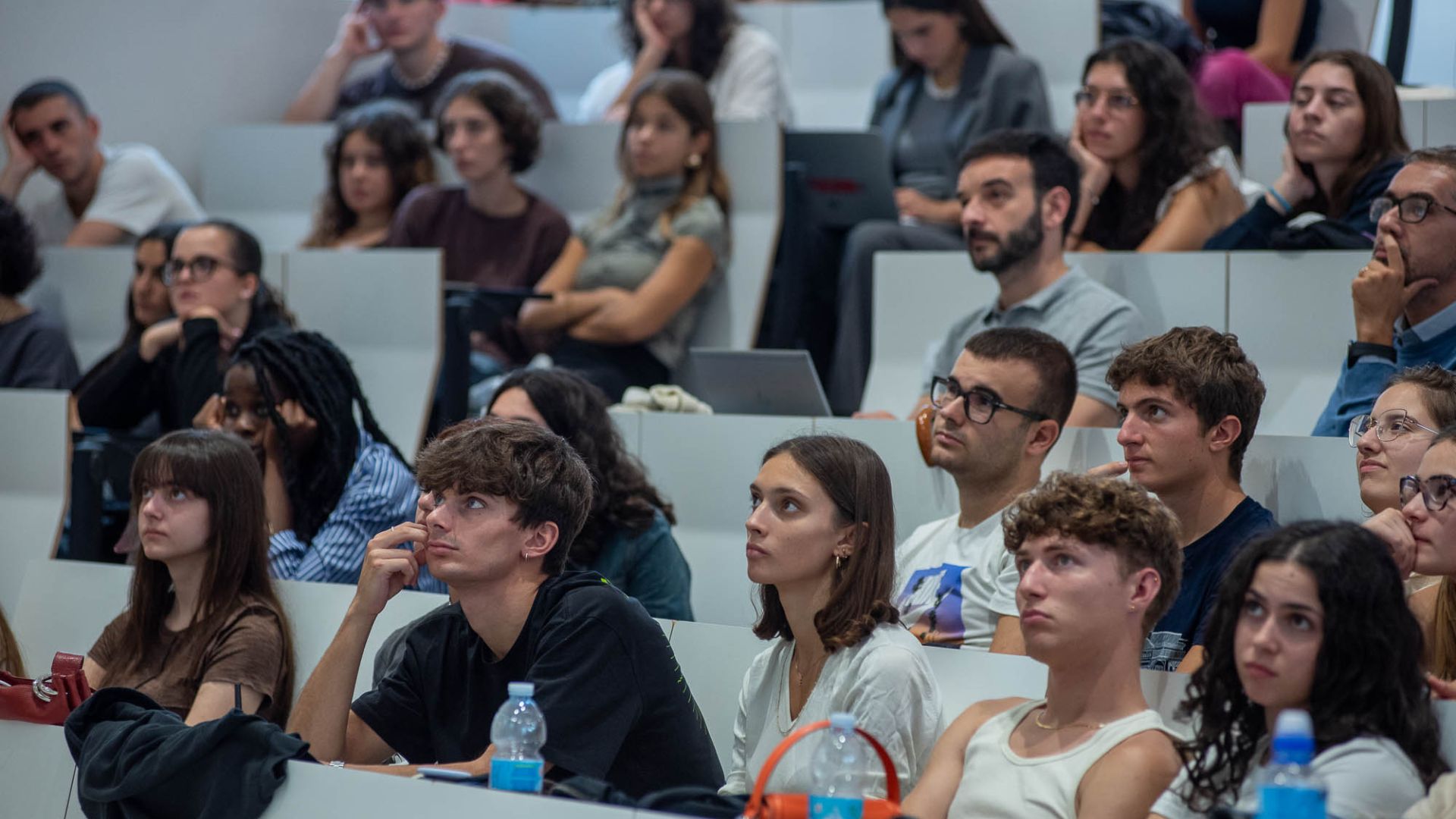
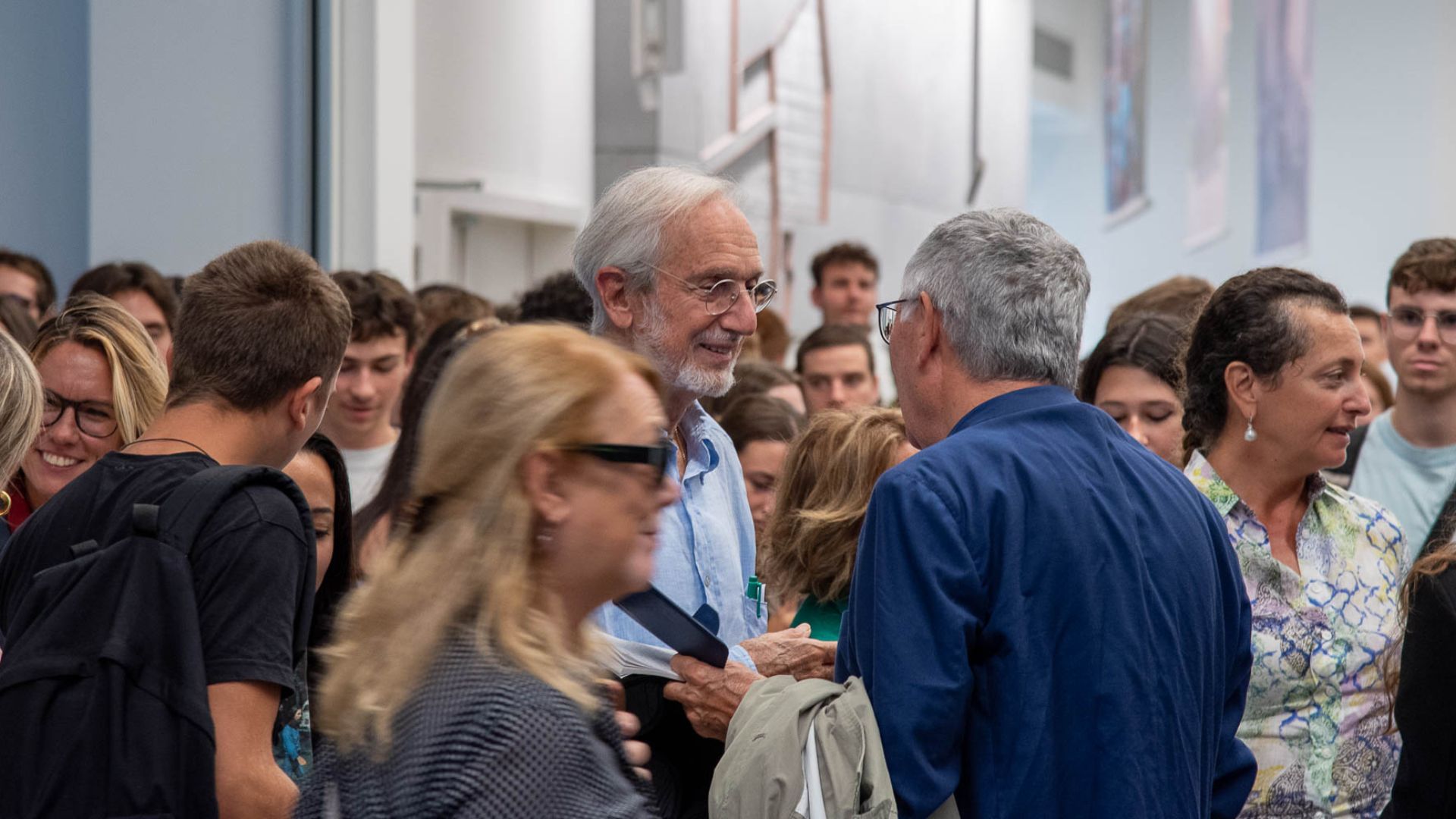
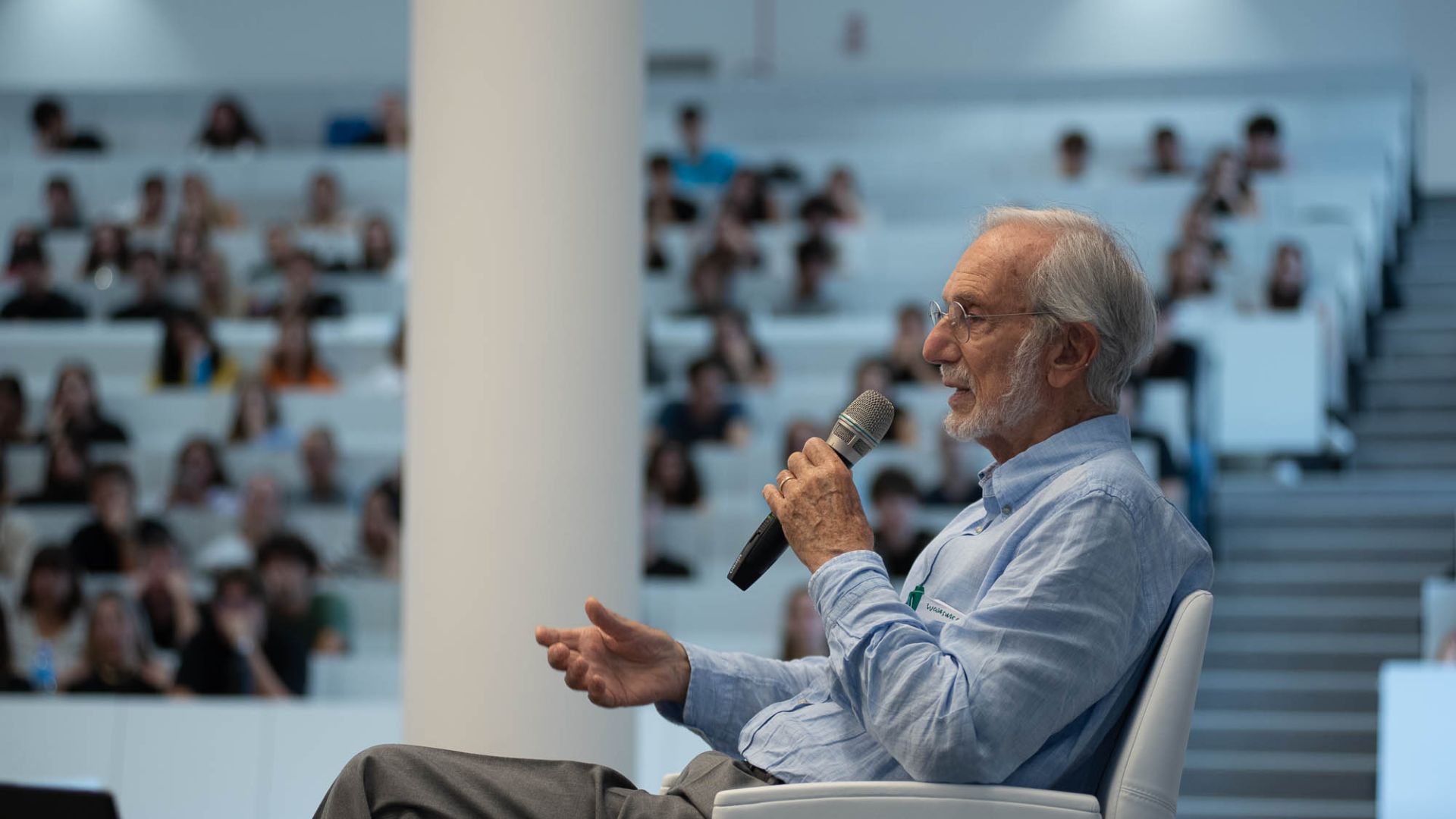
Making architecture
As Piano welcomes everyone, congratulating them on their excellent choice, the title of his lecture appears on the screens: Making architecture. But what does ‘making architecture’ mean for Piano?
“It’s an amazing job, you just have to do it well. It is a fundamental activity and has been one of the first trades of mankind. Because it gives us shelter”.
“There is an ethic behind building. We build to make the world a better world. We have to build solid things that stand up, as they have to stand the test of time”.
And about Politecnico: “Within these walls one breathes the poetics of building. Politecnico is able to offer you all facets that, put together, will help you to build things”.
At this point, he gets to the heart of his speech. He wants to give these boys and girls a recommendation and three pieces of advice.
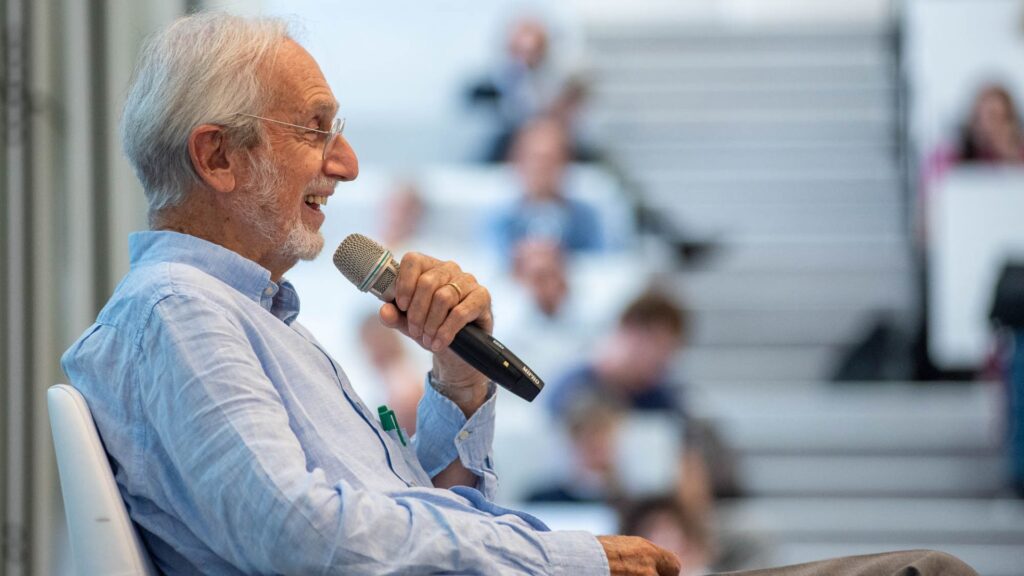
Study
The recommendation is: “Study!”
“You have to gear up and train, as becoming and being an architect is a long journey. You have to know the trade, to be dreamers. ‘Have social anxiety’, that’s what we used to say back then”.
He joined the Politecnico in 1960. He had started studying architecture in Florence, but he felt he needed something more: “More tension, more richness, more complexity”, and Politecnico had all the three
He confesses that at times, he did not feel like studying. But it is only by studying that one can take master the tools to manage all aspects of life.
“And now, let’s come to the three pieces of advice”. Slides appear on the screen, they are snapshots of Piano’s professional life.
Work together
A photo shows Gino Strada and Renzo Piano looking at each other, smiling at each other, understanding each other.
“We were in Uganda to lay of the foundation stone of Emergency’s hospital. Gino Strada was a client but above all, he was a companion and an ally. He asked me to realise an ‘outrageously beautiful’ hospital. But an architect cannot work alone. It is always a question of being in harmony with someone”.
The sense of working together shines through from the projected image.
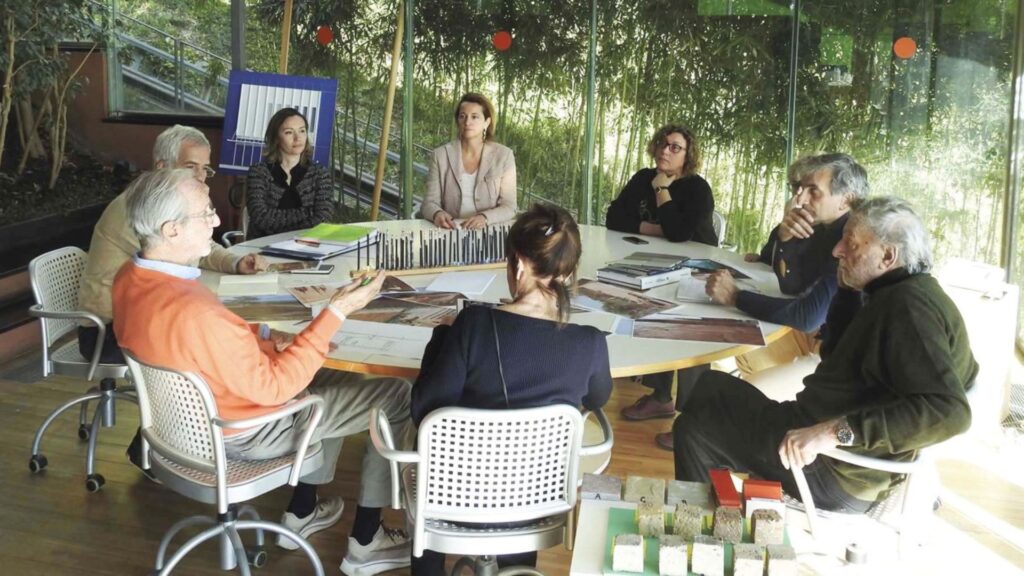
“It is around a table that the first glimmer of an idea is born. It is like ping pong: each person sends the ball back to each other, and so interesting things come up, the process is enriched. This miracle is called creativity”.
They worked in Kampala, on Lake Victoria in Uganda. One of the first sketches appears on the screen.
“I wanted the building to be zero-emission, to consume no energy. I know today this is necessary requirement, today but back then it was absolutely not so. We architects are generalists, we think in an overall sense. In our laboratories, we analysed the soil, to make the walls of the building. The panels serve to capture energy and create shade, and the space between them and the roof is to collect and channel breezes. The trees around are jacaranda, which add beauty and poetry”.
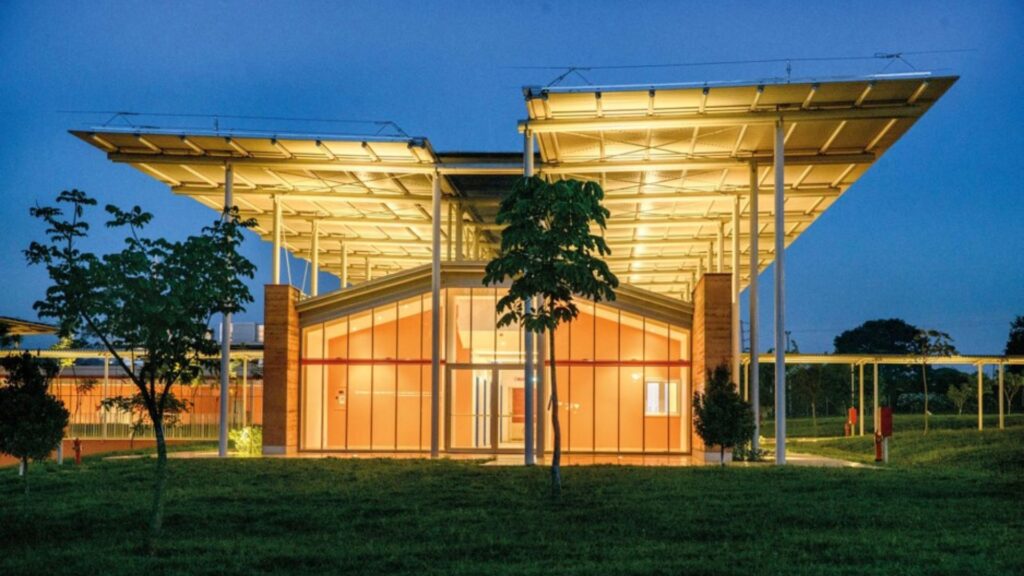
Don’t give up
With the second piece of advice, “Don’t give up”, Piano takes us to the Centre Pompidou. In an article of that time, a big ‘NON’ stands out, which was the replay of a certain part of society to the new project.
“In this picture I am with Richard Rogers. What did the two of us, two companions, two allies, reply to all these ‘NON’? I used to answer: ‘Je ne comprends pas’”’.
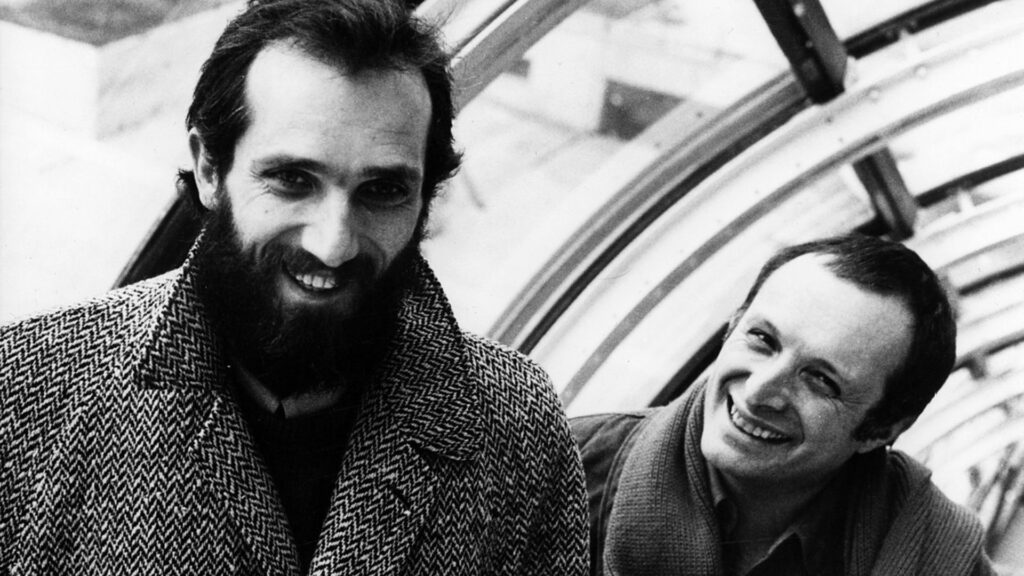
He smiles.
“They understood that we were very tough, and we didn’t give up. There were seven cases in court to stop this project. The Academy even started an ‘Architectural Gesture Association’ for the occasion. I have always been a little afraid of schools that call themselves ‘academies’. An academy can be a prison, whereas you have to look outside, at the real world”.
And they did not stop.
“There was fresh air at the time, it was 1971. We had to question the concept of cultural centres, which were now closed in on themselves. Places of culture should have created curiosity, not intimidation. Curiosity is culture, is awareness. It was the stubbornness of the sublime that guided us”.
The protest against that work was so strong that at one point the French companies made a cartel not to deliver the materials, stating that the building could not be built that way.
“We brought the parts at night from Germany, trying not to be seen”.
A technical drawing of a piece of the Pompidou structure appears on the screen: “Learn the trade, because you have to be able to draw like this to know how to build. And even if we have computers today, not much has changed”.
But how was that project selected that later encountered such a strong opposition?
“A total of 681 projects participated in the competition. The brief required to keep within the height of the surrounding buildings. And we proposed to go once that size deep into the ground and to expand twice as much over the surface. That is why we never thought we would win. And it was just thanks to this idea that the large outdoor square was realised.
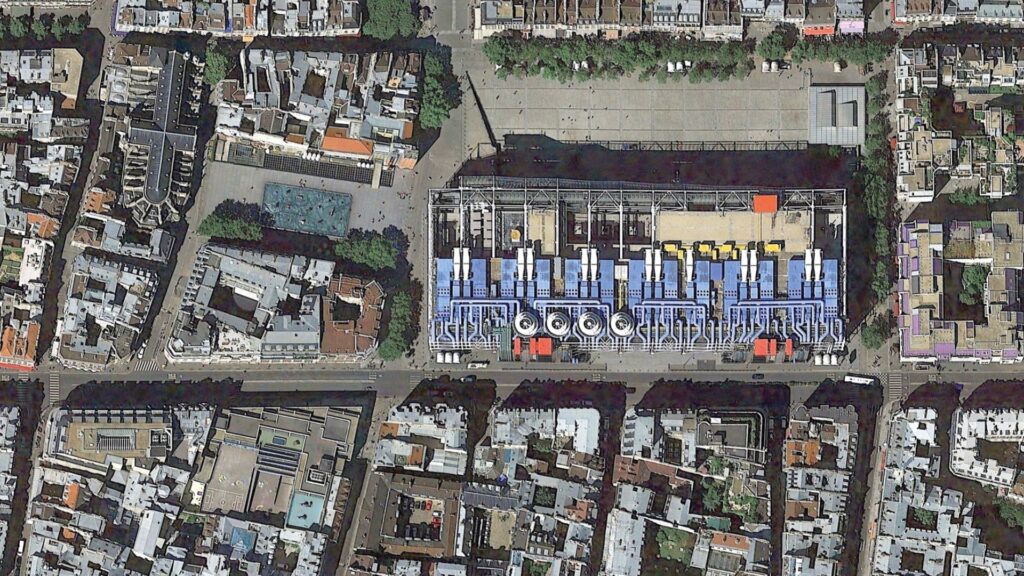
“Nothing was demolished to make the new building, that space was clear. When the question of colour came up, Richard and had the idea of using ‘the traditional code couleur’. Blue was for air circulation elements, yellow for electricity, green for water, red for people. After fifteen years, it turned out that the colour code was actually our own invention”.
Piano also has an anecdote to tell about the iconic air intakes that bring air from the square to the underground floors.
“The prefect of Paris (who was acting as mayor at the time) told us: ‘Jamais!’ Of course I replied: ‘Je ne comprends pas’. However, we took of three of the air intakes, and put them back in place three or four months later. He called us back, angry, repeating: ‘Moi vivant, jamais!’ So, we took them apart again. After three months, the prefect died: it was not our fault, I swear it! In the end, we were able to put the air intakes back in place.
“Every time I walk past this building, I wonder how they allowed us to do this”.

Now he laughs with gusto.
“I know the word ‘impossible’ in six different languages. They always tell you ‘it’s impossible’. Your only defence is that you know how how to make impossible things. Why did you learn this, and where? At Politecnico! So study, not to be at the mercy of those who tell you ‘it’s impossible’”.
Listen
“Do you know how many among the people you meet have spent their lives convincing others of their ideas? Listening that is more complicated.
The third piece of advice is to learn to listen. Now let’s go to London: we are at Shard, the skyscraper opened in 2012.
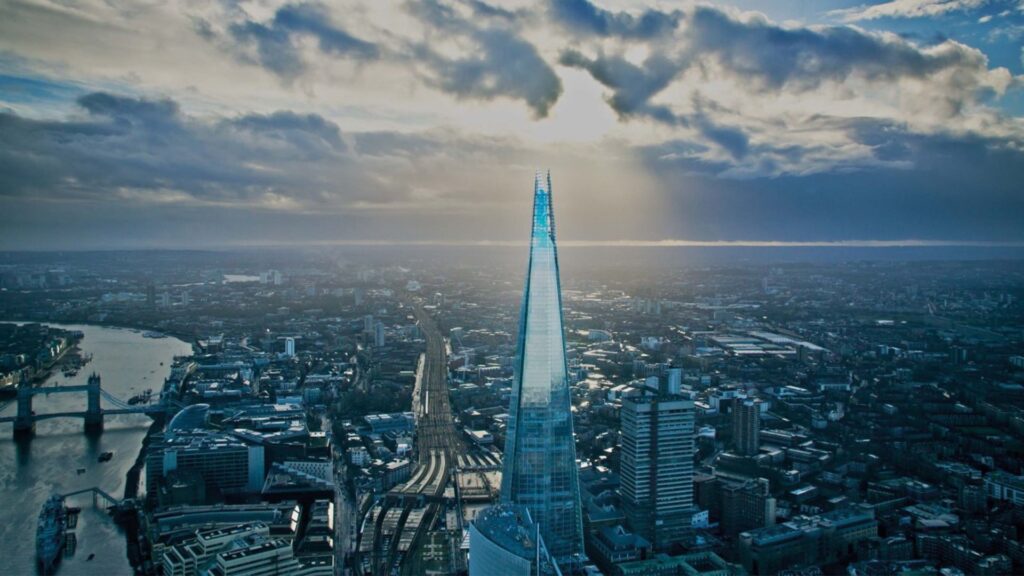
“Places have a history. That’s why I promised myself never to undertake a project without spending some time on site, wandering around with my hands in my pockets for a while. How do conceive a building for 12,000 people, with no parking spaces, in Southwark, central London?
“The city has spires everywhere’, I thought. Then I started making sketches, of a building with a very wide base and narrowing towards the top. It is a very intelligent shape, as it does not offer large surfaces to the action of wind. The shape at the base is as freaky as ever. I had the idea of joining the vertices of the base at the top, in the shape of a pyramid.
At a certain point, strenuous opposition arose.
“Listening, in our profession, means listening to everyone and everything. But listening to criticism does not mean obeying it. I think the most useful criticisms, after all, are those we find irritating. We should listen to criticisms that irritate us intelligently.
“Ours is a civic art: when you make a mistake, it’s too late. An architect who does a bad job imposes long-lasting ugliness on the whole community. That is why one must have the humility and strength to listen to all criticism. Out of ten criticism, we can throw away five, and out of the five we listen to, four are not that bad and one is probably right.
“Remember: you are not always right. This does not mean having a taste for compromise per se, but rather realising that people are often right. That is why we must always listen to them.
At the of the public inquiry, the project was given the green light: the judge was of the opinion that architecture cannot be ‘too contemporary’, as even St Paul Cathedral was contemporary when it was built!
“And so we were able to build Shard. Workers were acrobats and mountaineers. The sloping surface of the building reflects the sky immediately. Shard is never the same, it keeps playing with the changing sky of London and changes with it”.
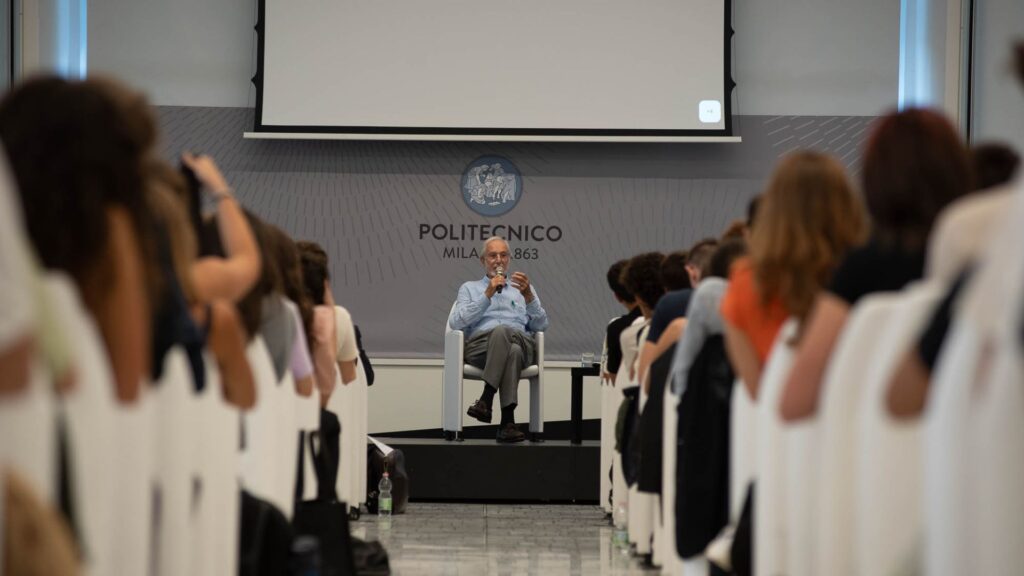
The time for concluding has come.
“You have chosen a wonderful profession. You have chosen the right school. Tonight, before you go to bed, take note of the three pieces of advice I have given you.
“Now I go. Thank you for everything. I wish you a good journey”.
